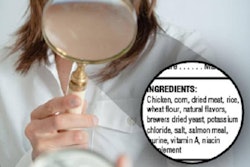Germany owns a 5% share of the global pet food market, according to Mintel, and just four pet specialty retailers account for 86% of the country’s pet food sales. This data came out, coincidentally, less than a week before Petfood Forum Europe 2015 took place in Cologne, Germany, on June 10—a nice reminder of how this country not only anchors the overall Western Europe/European Union (EU) economy but also the region’s pet food market.
Yet as gracious a host as Germany was to Petfood Forum Europe, less than 20% of the conference’s attendees were from that country. The more than 200 participants—a record for Petfood Forum Europe and a 25% increase over the last edition in 2011—came from throughout Western and Eastern Europe and other places far and wide. The 32 countries represented included Argentina, Canada, Israel, Korea, Nigeria, Peru, South Africa, Thailand and the US.
This representation reflects the increasing globalization of pet food. Petfood Forum 2015, held in Kansas City, Missouri, USA, in April, drew almost 2,500 participants from 33 countries. That Petfood Forum Europe nearly matched the number of countries with only about a 10th of the number of attendees speaks to the continuing appeal of Europe as a region for pet food professionals eager to learn the latest industry research and network with industry peers.
Indeed, Europe is the epicenter for significant innovation in pet food. Speakers at Petfood Forum Europe presented new research, for example, on emotional palatability (Christelle Tobie of Diana Pet Food in France); seasonal fluctuations in cats’ food intake, body weight and activity (Dr. David Thomas of Massey University in New Zealand); and the potential of caprylocapric medium chain triglycerides to address obesity in cats (Dr. Melina Culver of Abitec Corp. in the US).
One of the most progressive areas of pet food research happening in Europe is on insects as a possible protein source. Tarique Arsiwalla, co-founder of Protix in the Netherlands, presented information from this area and announced that his company is participating in the launch of the first commercial pet food product using insects as a protein ingredient: a therapeutic, hypoallergenic diet for dogs, IPD, from TroVet in the Netherlands. The product is scheduled to launch in September.
Arsiwalla’s data covered the low chance for allergic reactions to insect proteins (especially as this source of protein is truly novel for most dogs), the amino acid profile of insect protein and the palatability of IPD. He also explained how insects are a sustainable ingredient—for both human and pet foods and in terms of both protein sourcing and organic waste—and that EU legislation allows for the use of insect-derived products in pet food, as long as the insects were fed with plant materials. Finally, he shared suggestions for positioning and communication to get consumers in the Western world to accept the idea of insects being used in their or their pets’ food. (After all, 80% of the world considers insects a diet staple.)
Innovation at the industry level
Arsiwalla repeatedly stressed the opportunities for innovation with a protein source such as insects. I was reminded of his comments just two days later, when I was part of a group touring the Feed Design Lab in Wanssum, Netherlands. Open for only a year, this facility is the essence of innovation as well as collaboration. Actually, it’s much more than just a facility: it represents a unique concept and partnership of more than 60 organizations, including feed and pet food producers; suppliers of equipment, ingredients, software and more; educational institutions; and foundations.
Trudy van Megan, director of the Feed Design Lab, described its mission in terms of three main elements: research projects, education and the facility itself, which functions as a pilot plant that producers and others can rent to test new product ideas and formulations, for example. Within the mission, the lab has four programs: alternative raw materials (including insects), health and well-being, new technology, and efficiency and environment. Van Megan seemed especially proud of Young Feed Professionals (YFEEDPRO), a community within the Feed Design Lab of more than 100 young people working in the feed and pet food industries.
The plant is five stories high with three full, vertical feed/pet food production lines. During the tour, I asked Eric Vissers, the lab’s process engineer, about its usage to date. He said that so far, 60% of the pilot projects have been for feed for production animals (chickens, pigs, cows), with the remaining 40% split between pet food and aquafeed.
Perhaps your company can benefit from increasing the portion of pet food innovation happening there?

The Feed Design Lab in Wanssum, Netherlands, features a pilot plant with three full, vertical feed/pet food production lines that companies can rent to test new products and formulations.
















